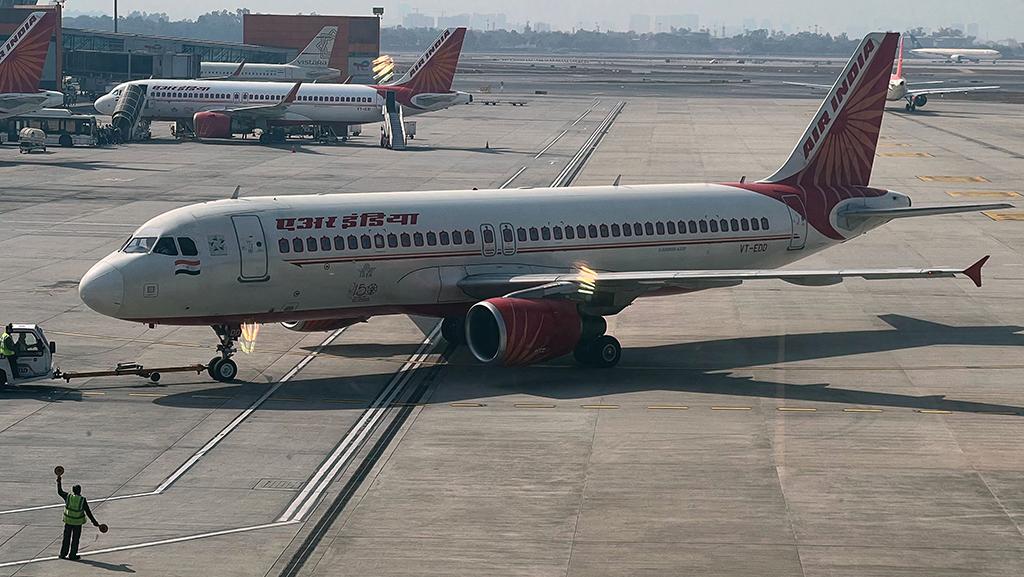Opinion: Could India Become Aviation’s Next China?

There is tremendous buzz about India following the record-breaking orders from Air India and IndiGo at the Paris Air Show, totaling 970 firm orders for Airbus and Boeing. With China’s lackluster international air travel recovery and its long-term growth prospects softening, the industry is searching for a new growth engine. Aerospace manufacturers are also seeking new options for low-cost sourcing in light of geopolitical tensions with China, and India is positioning itself to meet this need. Could India become aviation’s next China?
India’s air travel industry is underdeveloped. According to Airbus, India had an average of just 0.12 annual trips per capita pre-COVID-19, far short of China’s 0.49 and the U.S.’ 2.07. With the world’s largest population at 1.4 billion people, even small increases in India’s trips per capita would generate significant air travel demand.
Air travel growth is highly correlated with gross domestic product (GDP) growth, and the Organization for Economic Cooperation and Development projects that India’s real GDP will climb an average of 5.5% per year over the next 20 years. This falls short of China’s meteoric 14% annual growth in the two decades prior to COVID-19, but it is still an outlier in today’s world.
Increases in demand can be stymied by a lack of investment in airport infrastructure. To prevent this, the Indian government has promised to spend $12 billion by 2025 on modernizing existing airports and constructing new ones. In comparison, the EU spent just €4.5 billion ($5.4 billion) on airport infrastructure from 2000 to 2013. As many as 80 new Indian airports could be built in the next five years.
Despite these positive indicators, India faces structural hurdles on its path to becoming a leading aviation market. India’s economic growth is strong, but average income is the real driver of air travel demand. India’s GDP per capita will reach just $6,000 in today’s dollars by 2043—well below the $10,000 threshold for air travel demand to take off. Additionally, the wealth inequality in India means that many people cannot afford to fly. India must elevate individuals into the middle class instead of concentrating wealth among the affluent to raise its travel propensity.
With these competing factors in view, AeroDynamic Advisory’s 20-year air travel demand forecast still projects that India will be the fastest-growing region, at 8.3% per year. That would bring India to 9% of global air travel from 3%, but we do not expect it to overtake China.
The growth of India’s aviation industry will still have a meaningful impact on aircraft demand. China did not develop a regional aviation network because it invested in an extensive high-speed rail network to serve thinner, short-haul travel demand. India has long-term plans to develop a high-speed rail network, but only 6% of its total domestic air travel demand is at risk of substitution by viable rail routes slated to be operational within 20 years. Regional aircraft demand around the world has taken a hit in recent years from rising pilot costs, so growth in regional travel in India could help stimulate this faltering market.
India is positioning to get a piece of the aerospace manufacturing pie in exchange for its strong aircraft orders. Unlike countries that are full signatories of the World Trade Organization’s Agreement on Trade in Civil Aircraft, India and China can demand manufacturing offsets in exchange for aircraft orders. India’s respect for intellectual property rights makes it better than China from a manufacturing standpoint. India is also a Western ally and part of the Quad Alliance with Australia, Japan and the U.S., while China is a potential peer adversary that presents serious problems in terms of technology transfer approval.
The strategic interest of India in aerospace manufacturing extends beyond civil aviation. It is one of the world’s largest markets for defense equipment exports. Military offsets are common, so India can use defense acquisitions and civil orders to develop its internal aerospace supplier base.
India can work proactively to capitalize on these manufacturing opportunities. First, it can streamline its fragmented regulatory landscape to make it easy for outside companies to navigate. Additionally, since access to skilled labor is difficult in countries that do not have an established aerospace industry, India can develop workforce training programs. Some critical manufacturing services such as heat treatment are missing from India’s ecosystem, which forces outsourcing, so in-country development of these capabilities would improve its value proposition.
Great expectations for India should be tempered by the country’s low GDP per capita and the hurdles it must overcome to develop into a large player on the global stage. But some of the buzz is clearly warranted.
Martha Neubauer is a senior associate at AeroDynamic Advisory in Ann Arbor, Michigan.
The views expressed are not necessarily those of Aviation Week.




